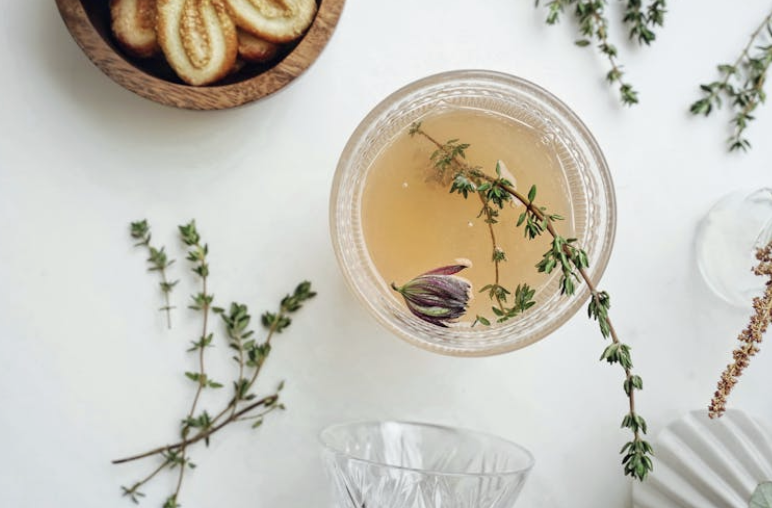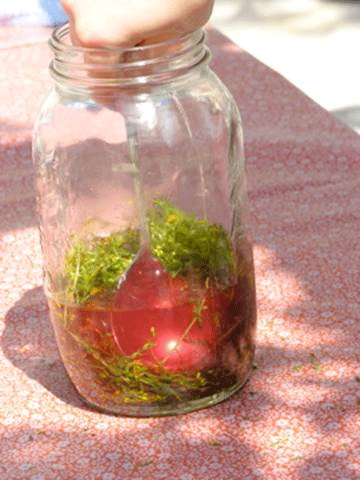What is a tincture?
A tincture is a process of soaking plant matter in a solvent. A tincture dissolves the plant material and extracts its beneficial constituents through alcohol, vegetable glycerin, or vinegar. Alcohol is the most effective and most common method for tinctures.
Tinctures can be consumed internally or used topically in water for tending wounds, soaking feet, bathing, or as a household disinfectant.
Fast Facts About Tinctures:
- They can be stored for extended periods: Alcohol-based tinctures can last indefinitely if prepared properly, while apple cider vinegar tinctures can last for about six months.
- Once prepared, tinctures are simple to dispense and can be taken instantly on their own or in a glass of water or tea. Taking a tincture of herbs with calming properties in a warm cup of tea can maximize your relaxation!
- You can tincture any part of an herb: leaves, roots, flowers, or seeds.
- Making your own tincture is a great way to ensure that you know exactly what’s going into your body - by overseeing the process yourself, you can ensure no dangerous ingredients find their way in!
Before You Make a Tincture
Prepare Your Percentages
Before you make a tincture, you need to do your research about the alcohol you plan on using. Different herbs need different alcohol concentrations to extract their active constituents. For example, a tincture of yarrow Achillea millefolium (L.) requires only 60% alcohol.
Alcohol over 75% will extract constituents quicker. Vodka, which is usually 40%, works just as well for botanicals that don’t need as high of a concentration.
Make Sure the Type Suits the Purpose
The type of alcohol used will depend on the intended use of the herbal preparation. Any herbal preparation for oral use must use ethyl alcohol, the type found in vodka.
Rubbing alcohol (isopropyl alcohol) or wood alcohol (methyl alcohol) are toxic if taken internally, so these can only be used for topical preparations.
In some states, pure grain alcohol is illegal. In this case, you can use vodka or something similar. Some herbalists have made tinctures using white rum, brandy, or even sake!
Basic Tincture Recipe:
Ingredients
- 2 ounces of a fresh chopped herb (or 1 ounce if using dried powdered herb)
- 5 ounces of alcohol (such as vodka or apple cider vinegar)
Preparation Instructions
Mix the herb with alcohol or cider vinegar in a canning or preserving jar with a tight-fitting lid (mason jars are recommended).
Keep the tincture in a tightly closed jar in a cool, dark place for approximately two weeks. Gently shake the tincture two to three times per day.
After two weeks, strain the tincture through a coffee filter, cheesecloth, or muslin. You may need to strain your tincture two or three times to remove all the herb solids. Leaving solids in your tincture may lead to mold and spoilage.
Store your tincture in a dark bottle with a dropper in the cupboard.
Use Instructions
To use a tincture, you can generally apply 20-40 drops three times a day for most common herbs. However, we always recommend that you check with an herbalist before you tincture with herbs that have a low therapeutic margin, as they require a smaller dosage. For a milder taste, you can dilute the tincture in approximately one-quarter cup of water to take.
Get Tincturing This Summer with ACHS!
Tinctures can help promote health, relaxation, and a variety of other benefits. You can check out some of our favorite immune-boosting tincture recipes here!
To learn more about the herbal medicine programs and degrees offered at ACHS, check out our Herbal Medicine page here!
Download our eBook “Making Herbal Tinctures.”
Disclosure of Material Connection: This blog may contain affiliate links. I am disclosing this in accordance with the Federal Trade Commission’s 16 CFR, Part 255: “Guides Concerning the Use of Endorsements and Testimonials in Advertising.
This article is for informational purposes only. It is not intended to treat, diagnose, cure, or prevent disease. This article has not been reviewed by the FDA. Always consult with your primary care physician or naturopathic doctor before making any significant changes to your health and wellness routine.





